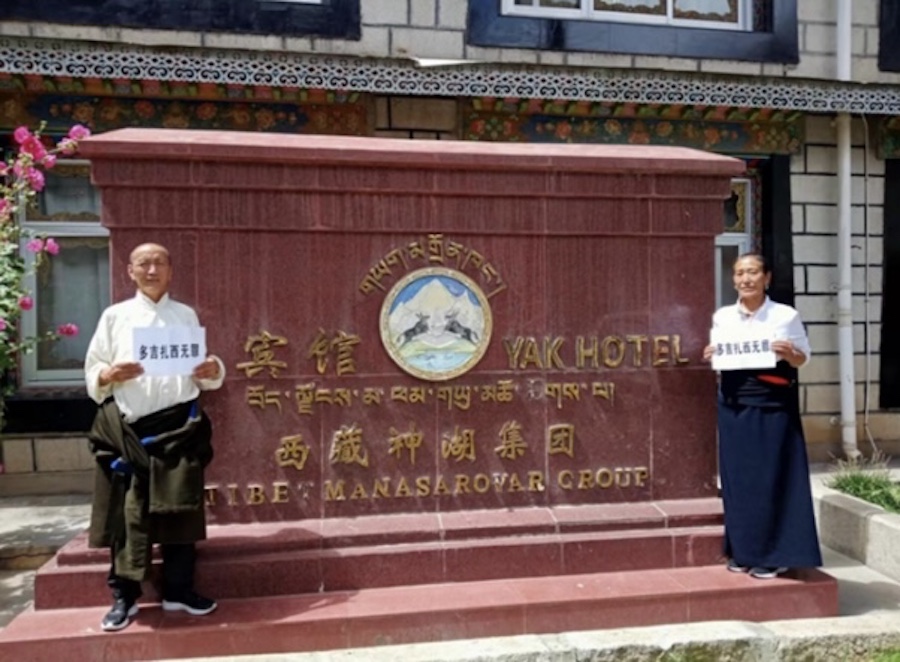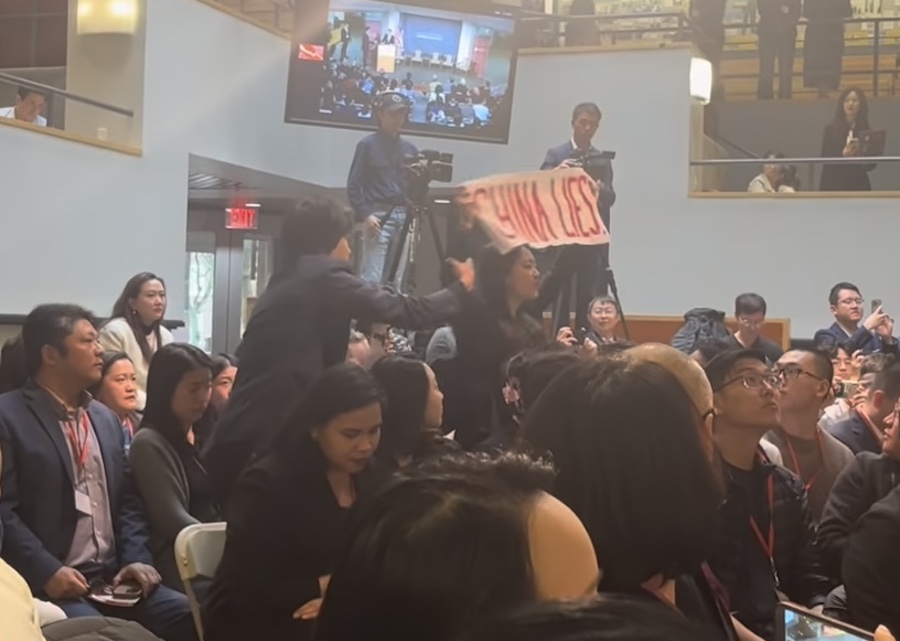By Karen Cotton
The Tibetan lamas of the Drepung Loseling Monastery will do several regional performances that include mandala sand painting at the University of Wyoming Union in April.
In 1999, Ben Jennings founded a chapter of Students For A Free Tibet at the University of Wyoming. It is a chapter of the International Campaign For Tibet.
“The group tries to educate people on what’s gone on in Tibet with the Chinese occupation,” Jennings said.
China fully occupied Tibet in 1949 and considers it part of their communist country, he said.
“Once the Chinese occupied Tibet they don’t have the freedom of religion or speech,” he said. “So they go to India to study these things. They walk over the Himalayas and it takes over 30 days. There is a big risk of getting caught.”
There also is discrimination of the Tibetan native population because the Chinese government transfers Chinese into Tibet.
“In Tibet it’s an interesting situation,” Jennings said. “It’s so isolated. It’s the highest country in the world and is surrounded by the Himalayan mountain range.”
Jennings said the situation is similar to what happened in the United States with American Indians.
“In the 1940s it was the first time they had any contact with white people,” Jennings said about the Tibetans.
Once the Tibetans reach India, they can only go to the monastery to study. Currently, there are 2,500 monks at the Drepung Loseling Monastery.
The original monastery in Tibet had housed 10,000 monks. It was destroyed in 1949.
Now the Drepung Loseling Monastery sends tours to the U.S. to raise funds to promote world healing and peace.
“They feel that by doing these performances and sand paintings they’re promoting world peace and healing,” Jennings said. “Their arts date back to over 2500 years ago. It’s a way to share their culture. The third reason is to raise funds to support the monastery.”
Jennings, who owns Bardo Entertainment, is bringing the monks to this area. He traveled around the country with the Tibetan lamas of the Drepung Loseling Monastery during last year’s tour.
While Jennings was with the monks, they made an eight-foot-long mandala at the World Trade Center site.
He said it was a special mandala for places that have suffered a lot of death and destruction.
“At first it was sad,” Jennings said about being at the Trade Center site. “People came to see the mandala and it helped them to get beyond the tragedy. It was one of the most beautiful things I had ever seen. There were 22 monks working on it for three weeks. I don’t think I’ll see anything like it ever again.”
The piece was destroyed in a matter of minutes after people viewed it. Jennings said he was reminded of impermanence.
“Most people in the U.S. always think of the permanence of buildings and this was one of the biggest landmarks,” he said.
The monks also made a mandala at Washington, D.C., at the Smithsonian Institution that was similar to the one at the World Trade Center site.
“Sixty thousand people came to see it,” Jennings said.
The monks will make a mandala at the UW Union April 7-11.
“They use a chak-pur, which is a brass funnel and they put the colors of sand in the funnel,” Jennings said. “They use a stick on top and the vibrations create a slow stream of sand on the end. They can make it fall a couple grains at a time. It takes five days to do a painting. They start on a clear black table that’s about five feet across.”
Before they start, they have an opening ceremony to consecrate the ground. The monks draw chalk lines and use compasses to make the geometrical outline of the mandala, he said.
“They start in the center with sand,” he said.
The monks create the background color and layer patterns on top. When they complete a mandala, it is swept up.
“It represents impermanence,” Jennings said. “They give some of the sand to the audience and then take the sand to a nearby river, or flowing stream of water, and they believe it carries healing properties throughout the whole world.”
The shows the Tibetan lamas of Drepung Loseling Monastery will give in Cheyenne and in Laramie last two hours and consist of 10 different pieces.
“One of the crowd favorites is the ‘Dance of the Snow Lion,’” Jennings said. “It’s playful and the monks do a good job imitating cats. The snow lion is a mythical figure they have. People enjoy their debate piece of how they study in the monastery. It’s a five-minute example.”
The monks dance and perform music.
“They have a chodrum. That is a small hand drum with two pendulums on each side and they simultaneously play that and have bells playing at the same time,” Jennings said.
During this piece the group leader presents the Celestial Travelers with a gift and they leave the stage. The leader is the most educated and has a Geshe degree, which is similar to a doctorate in philosophy.
While the monks play cymbals and drums, they also use are longhorns that are 18 feet long.
“The longhorns have a deep bass sound and represent the earth,” Jennings said. “The gyaling horns represent the heavens.”
He said he believes strongly in human rights and people having freedom.
“We can’t sit back and not stop that,” he said about the Tibet situation. “We have to do something to stop that.”
Jennings majored in political science at UW and also is the manager of Grand Avenue Pizza.
“I wanted to go into politics, but now I want to work for non-profits in third-world countries because that’s a more effective way to make a change,” he said.









